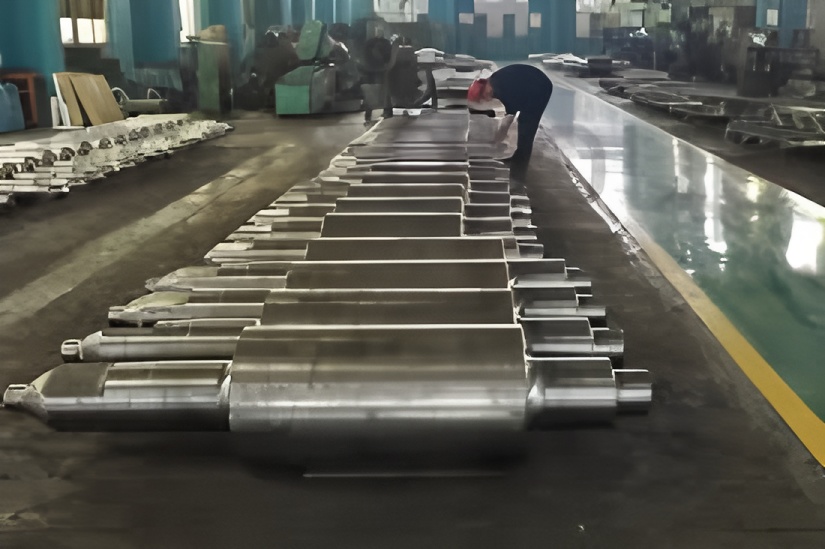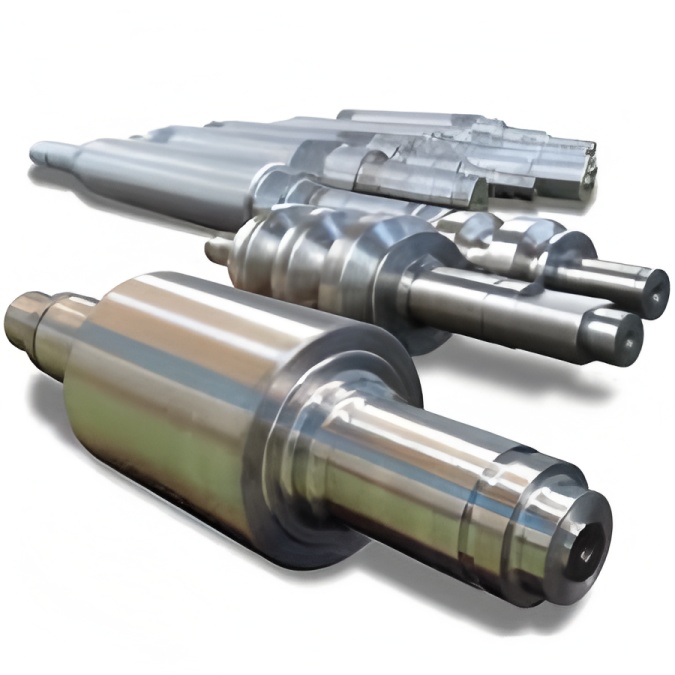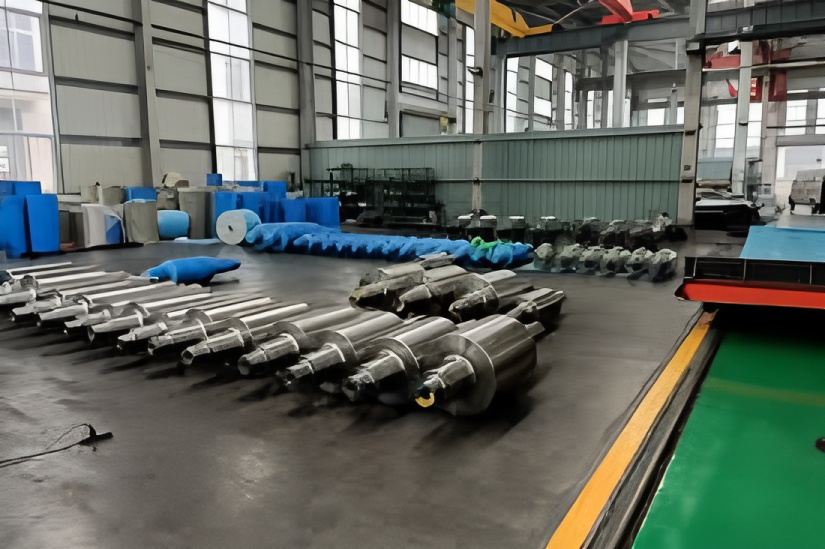1. Roll Installation and Rolling Adjustment
Roll installation and adjustment are core tasks for establishing a stable rolling process. The objectives of rolling mill adjustment are to maintain optimal mill operation, ensure adherence to feasible process systems, guarantee rational production processes, uphold product quality, reduce cobble accidents, and improve mill operation rates.
To achieve these goals, the mill adjuster must first verify the rolls, guides, and stands provided by the roll maintenance section, perform online replacement and installation of these components, and complete the mill’s online pre-adjustment. During rolling, adjustment personnel must promptly diagnose the causes of production issues based on product quality, formulate rational adjustment plans, and implement them. Adjustments must ensure the geometric shape and dimensional accuracy of the rolled product, maintain proper micro-tension control and looper tension-free control, and support a stable continuous rolling process.
The rolling process is completed in three steps: first, online mill replacement/installation or roll replacement/installation; second, pre-adjustment of the re-lined mill; finally, normal rolling commencement and subsequent online mill adjustment.
2. Online Mill Replacement and Installation
Before changing rolls, verify that the incoming rolls match the order, rolling type, and specification. Clean the slideways, roll flat heads, and sleeve inner holes, then apply clean grease. After preparation, replace the stand according to the roll change plan. The procedure is as follows:
Turn off mill cooling water and remove inlet/outlet guides.
Disconnect upper and lower roll water pipe joints.
Activate the hydraulic locking device to open the stand.
For horizontal stands: select “Stand traverse” to move the stand forward to the operating-side limit.
For vertical stands: select “Rack Up/Down” to lower the stand to the lower limit position.
Remove the fixing pin from the flat head cover bracket wrench and turn the wrench to separate the stand flat head from the bracket.
For horizontal mills: retract the flat head cover using the “stand traverse” button, disengaging it from the roll flat head, and move the bracket to the drive-side limit.
For vertical mills: raise the flat head cover bracket to disengage it, move to the drive-side limit, then traverse the mill to the outer limit position.
Use a crane to lift the entire stand from the rolling line.
Position the new roll stand on the sliding base, using a skid bar to rotate the roll so its flat head aligns with the drive shaft flat head cover.
After confirming the mill stand is centered on the rolling line, reverse the above steps to engage the roll flat head with the drive shaft cover until it reaches the limit.
Activate the locking device to secure the stand and reconnect water pipes.
Install guides and fine-tune the roll gap and guide positions.
3. Pass Change Procedure
Each roll pair contains multiple grooves. When a groove reaches its specified production tonnage (or is damaged), it must be replaced. The procedure is:
Loosen the inlet and outlet guide guards.
Traverse to the new rolling pass.
Install and tighten guides after alignment.
Set the new pass roll gap with reference to the original pass height and process specifications.
Adjust cooling water pipe position to target the new groove accurately.
Move the mill to position the new groove out of the rolling line.
Remove rust from the new groove with a portable grinder and roughen the surface to prevent skidding.
4. Trial Rolling After Pass Change
Due to larger sections and lower speeds in roughing, trial rolling is often omitted. However, for intermediate or finishing mills, trial rolling with small stock is essential to prevent cobbles or speed mismatches from improper adjustment.
New grooves often cause biting difficulties or skidding. To ensure successful biting:
Grind the groove to remove oil and roughen the surface.
Increase the new pass height by 0.5–1mm.
Reduce the upstream mill speed by 3–5%.
Turn off groove cooling water to minimize temperature drop at the stock head.
Trial rolling after intermediate or finishing mill pass changes confirms: roll gap setting合理性, rolled stock dimensions, guide installation accuracy, groove roughness, and biting capability.
Sample stock is sourced from the unit’s flying shear or cobble remnants. Specifications must match the upstream stock requirements. Heat samples to rolling temperature in the furnace before pass change. Feed samples manually at “crawling” speed and measure height with a vernier caliper.
5. Online Mill Adjustment
Key aspects include: roll axial adjustment, roll radial adjustment, roll gap adjustment, guide installation/adjustment, rolled stock measurement, and finished product inspection/adjustment.
1) Roll Axial Adjustment
Pass turning errors or poor installation can cause pass misalignment (“misaligned rolls”), leading to bending, twisting, irregular rolling, fins, uneven groove wear, and potential cobbles. Adjusters must inspect and correct misalignment before stand installation or roll adjustment.
2) Roll Gap Adjustment
A critical rolling parameter, especially after roll or pass changes.
Roughing/Intermediate Mills: Larger roll gaps and pass turning errors require adjustment based on pass groove depth, measured with inside calipers. Consider roll gap bounce (roughing: ~1mm; intermediate: ~0.5mm). Actual hot stock size equals measured groove depth plus bounce.
Production Measurement: Use outside calipers on moving stock, taking multiple measurements for accuracy. Sample head/tail sections from #1 and #2 flying shears for size verification.
3) Finishing Mill Roll Gap Adjustment
Two methods: feeler gauge or small round bar indentation.
Feeler Gauge: Simple, but must account for mill bounce.
Small Round Bar Indentation: Use a soft round bar ~3mm larger than the set gap. Jog the mill, roll the bar through the gap, measure indentation thickness, and adjust until it matches the set gap.
Production Measurement: Use the wood imprint method for dynamic inspection.
4) Rolling Line Alignment
All stands must align on the same straight line. Misalignment causes uneven pass wear, guide damage, and cobbles. Alignment ensures consistency across the entire unit.
Installation Positioning: Use two coordinate points at each end of the line, aligning stand centers with a reference wire.
Marking: Mark rolling line center coordinates on the mill base or arch. During installation, align guide centerlines with these marks.
Light Source Method: Place a light at the upstream stand entrance guide and observe from the downstream stand exit to verify alignment.
Data Adjustment: Calculate dimensional relationships between pass centers and the rolling line based on mill and base dimensions for precise adjustment.
5) Adjustment During Rolling
Monitor stock behavior and dimensions to assess guides, grooves, speed, and overall process stability, ensuring no cobbles and qualified products. Use “observation,” “sampling,” “wood imprint,” and “listening” methods.
Observation:
Stock “head up” at exit: inlet guide too low.
Stock “head down”: inlet guide too high.
Round stock twisting: inlet guide gap too small or guide wheel height incorrect.
Sampling (Flying Shear Head/Tail or Cobble Pieces):
Uneven roll gap marks: incorrect inlet guide installation.
Correct height but small width variation: insufficient incoming section or excessive tension.
Fins: various causes (overfilled pass, excessive reduction, misaligned guide, worn/damaged guide).
Folding: caused by fins or scratches from previous stands.
Asymmetry (improper ovality): misaligned rolls or oversized inlet guides.
Periodic pits/indentations: groove spalling or cracks (“drop meat”).
Wood Imprint: Press wood against moving red steel at the roll gap to assess filling, guide usage, and roll condition via the burnt impression.
6) Inter-Stand Tension Judgment and Adjustment
Tension affects metal flow, reducing width, while stacking increases it. Assess tension by measuring width variation along the stock head, middle, and tail. Greater width change indicates higher tension. Use visual inspection or wood imprint (for smaller sizes).
The main console can detect tension via motor load current changes when stock enters successive stands. Current decrease indicates pulling (tension); increase indicates stacking.
After confirming each stand’s stock height, eliminate tension via speed adjustment, starting from the first stand and proceeding downstream. Adjust speeds gradually, observing width increase and minimal looping. Avoid adjusting speed and roll gap simultaneously to prevent confusion.
Irregular width changes may stem from uneven temperature; periodic changes may indicate eccentric rolls or groove spalling in upstream stands. Address based on specific causes.



